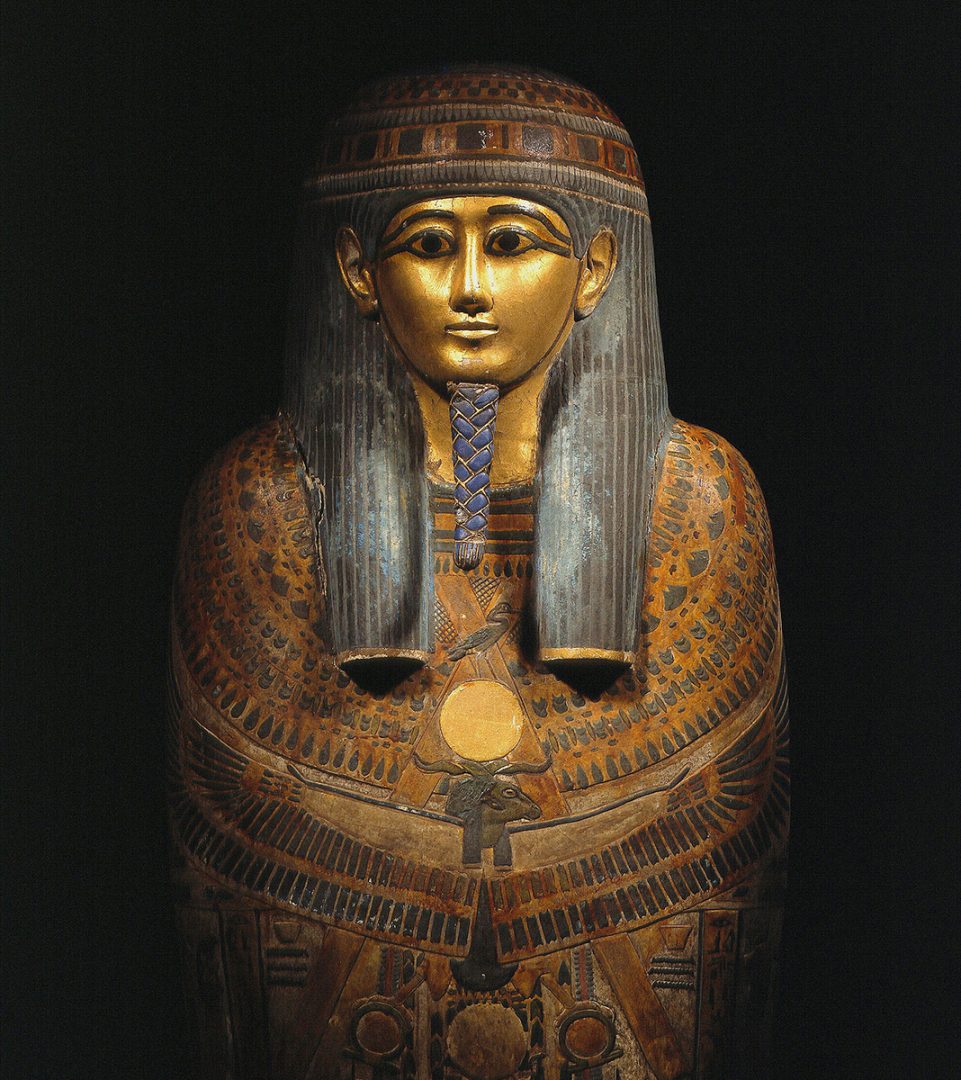Panehsy
Life after death was of crucial importance to the ancient Egyptians. They therefore prepared for the afterlife as well as possible while they were still in good health. Around 900 BC, when the dead were mummified, the Egyptians started to make close-fitting cartonnage covers for the mummies. Cartonnage was linen that had first been soaked in gum arabic. It would then be plastered, wrapped around the mummy, and laced at the back. Each covering was painted in different colours and many were coated with gold leaf.
Decoration
The mummy case of the priest Panehsy is a fine example, decorated with hieroglyphics and figures of winged gods. Such paintings were intended to provide general protection. On the back of the cartonnage you can see a ‘djed pillar’, the Egyptian symbol for sustainability and immortality.
Details
Museum number: AMM 17-eDimensions: 14 x 46 x 178 cm.
Material: cartonnage
Period: 890-890 BC
Findspot: unknown
